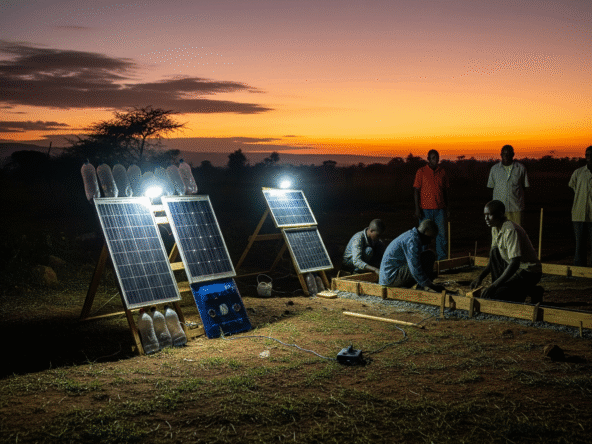Planning to build on black cotton soil especially in areas like Ruiru, Joska, or Kitengela? Then you already know: this soil type poses serious challenges to septic systems. Its tendency to expand when wet and shrink when dry can easily crack poorly built tanks and compromise sanitation.
This guide shares practical, affordable construction methods tailored for Kenyan conditions, so you can build a durable, low-cost septic tank even in difficult soil zones.
Why Is Black Cotton Soil a Problem?
Black cotton soil causes:
- Cracking of unreinforced tanks and floors
- Groundwater seepage into the tank
- Damage to soak-away systems
- Shifting soil pressure on tank walls
That’s why tanks in these areas need moisture-proofing and soil separation, much like the strategies used in Soak Pit Design for Residential Plots.
1. Site Selection & Excavation Tips
Before construction begins:
- Dig 2.5–3m deep to inspect for more stable soil layers (like murram or red soil)
- Keep tanks 5m or more away from your house foundation
- Avoid placing tanks in flood-prone or waterlogged areas
This supports long-term tank stability and ties well into broader water planning as discussed in Construction Site Drainage Planning.
2. Proven Construction Methods That Work
A. Polythene Lining + Murram Backfill
- Line all tank walls with heavy-gauge polythene
- Use murram or quarry dust as backfill—not the original black cotton soil
- Compact every 150mm layer to prevent air pockets and shifts
This stabilizes the structure against moisture and expansion.
B. Reinforced Concrete Base & Walls
Use a mix ratio of 1:2:3 (cement:sand:ballast) with:
- 6-inch thick concrete base
- Y10 or Y12 steel reinforcement, spaced every 150mm
- Internal walls plastered with waterproofing additive
For cost-conscious developers, this approach mirrors reinforced methods used in Affordable Outdoor Paving Options.
3. Better Drainage Alternatives to Soak Pits
Standard soak pits often fail in black cotton zones due to poor percolation. Consider these instead:
- Leach fields: Perforated pipes laid in gravel trenches
- Bio-digesters: Compact, clean but costlier
- Raised soak pits: Built above black cotton and sealed from below
These systems maintain drainage without affecting structural integrity.
4. Budget Estimate for a Septic System in Black Cotton Soil
| Item | Estimated Cost (KSh) |
|---|---|
| Manual Excavation | 15,000–25,000 |
| Hardcore & Murram Fill | 10,000–15,000 |
| Concrete & Steel Bars | 30,000–45,000 |
| Skilled Labor | 20,000–30,000 |
| Pipes, Covers & Vents | 5,000–10,000 |
| Total Cost Range | KSh 80,000–125,000 |
Perfect for a 2–3 bedroom household, handling up to 7 occupants.
5. Costly Mistakes to Avoid
- Building with hollow blocks only—no reinforcement
- Skipping polythene moisture barrier
- Placing the tank too close to structural walls
- Omitting vent pipes leads to foul smells and pressure issues
Prevent these early to avoid expensive repairs later.
6. Add-Ons That Extend System Life
- Add a grease trap from the kitchen sink to prevent clogging
- Include a vent pipe with a fly screen to release gases
- Ensure manhole access for future de-sludging
Just like smart upgrades in Green Building Practices, these small details bring long-term rewards.
Constructing a septic tank in black cotton soil doesn’t have to break the bank or fail after a few rainy seasons. With the right plan, reinforcement, and drainage alternatives, you can build a reliable, safe, and budget-friendly system.
More expert tips to explore:

